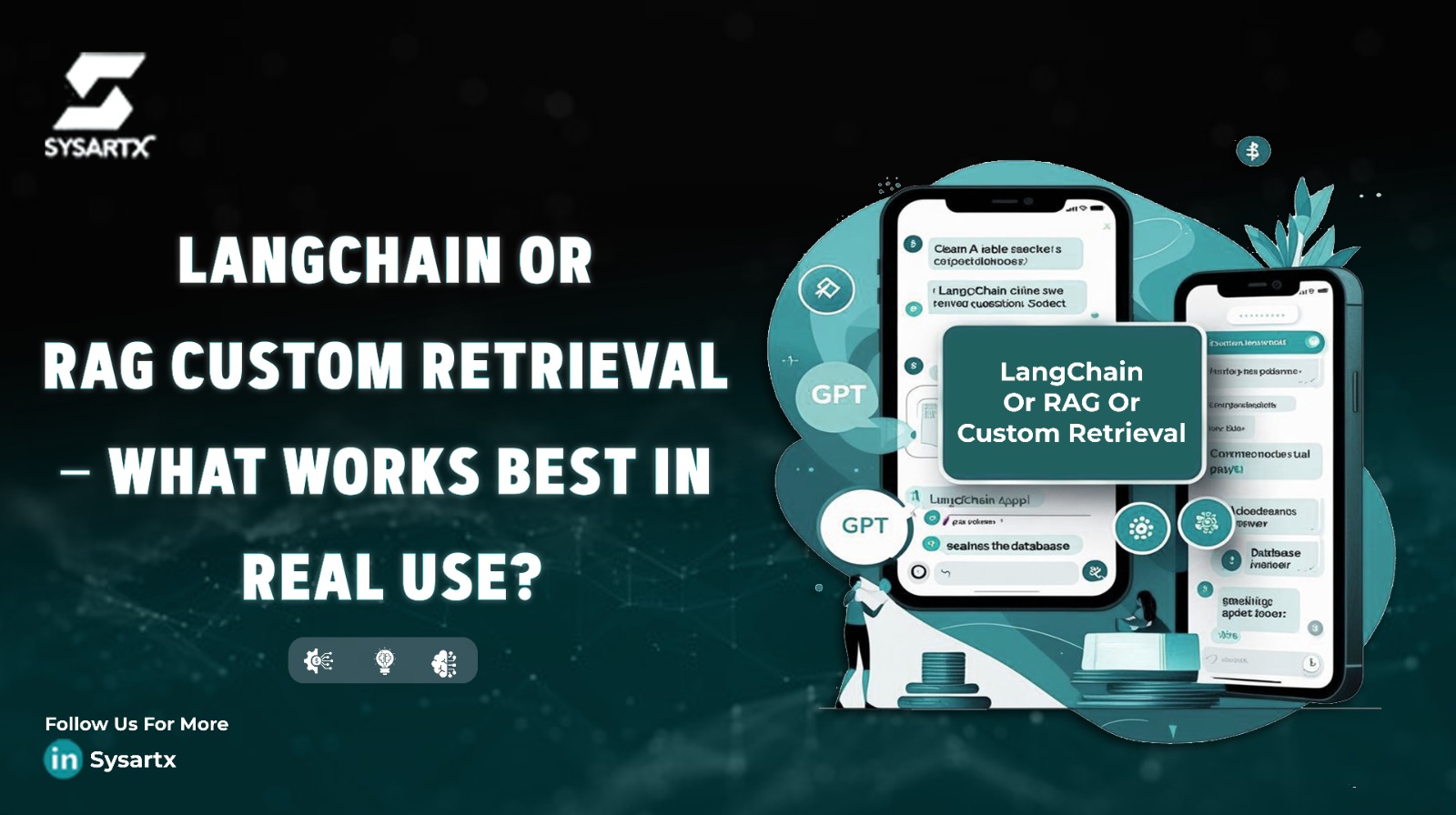
As more teams build AI-native products, one question keeps surfacing:
Should we use LangChain, go pure RAG, or build a custom retrieval system from scratch?
It’s not just about what’s possible — it’s about what’s sustainable, scalable, and user-friendly in a real product.
Let’s unpack what actually works in the wild — beyond the hype and tutorials.
LangChain: The Swiss Army Knife (That Sometimes Overcomplicates Things)
LangChain took off by promising an easy way to chain LLM steps together. It’s feature-rich, well-documented, and rapidly evolving.
In real use cases, LangChain shines when:
- You need to orchestrate multi-step reasoning (retrieval → reasoning → summarization)
- You’re experimenting with different retrieval techniques (vector stores, tools, memory, etc.)
- You want fast prototyping with built-in connectors
But here’s the catch: LangChain can be heavy. It introduces abstraction layers that sometimes obscure what’s really happening under the hood. For mature products, that often becomes a limitation, not a feature.
If you’re optimizing for production reliability and full control, LangChain may not be your forever home — it’s your launchpad.
RAG (Retrieval-Augmented Generation): Clean and Scalable (If You Do It Right)
RAG — combining retrieval with generation — has become the default pattern for LLM apps that rely on internal or private knowledge.
It works well when:
- You have a lot of static content (docs, knowledge bases, manuals)
- You need the LLM to stay grounded and avoid hallucinations
- You care about performance, cost, and control
But RAG isn’t just “search and drop into a prompt.” Quality retrieval defines output quality. Poor chunking, bad embeddings, or weak context window management = trash responses.
Done well, RAG is lightweight, modular, and production-ready. But it requires tight integration between your vector store, preprocessing pipeline, and prompt logic.
Custom Retrieval: High Effort, High Reward
Sometimes, off-the-shelf chains or simple vector lookups just don’t cut it.
Real-world use cases that often need custom retrieval:
- Multi-language documents with varying formats
- Time-sensitive content (e.g. pricing, live inventory)
- Structured and unstructured data in the same flow
- Legal, medical, or financial domains where precision matters more than creativity
Here, building your own hybrid retrieval system — maybe combining dense vectors with keyword scoring, metadata filtering, or external tool lookups — is the only way to deliver trustworthy answers.
But it’s not for the faint of heart. You need:
- Good chunking strategies
- Re-ranking
- Source tracking
- Custom evaluation pipelines
Founders and teams that go this route usually own their infrastructure end-to-end — because they care more about trust and performance than speed of development.
What We’ve Seen Work Best
Start with LangChain to prototype. Shift to RAG for control. Go custom when precision and trust matter most.
It’s not either/or — it’s a progression:
- Use LangChain when you’re validating the problem
- Use vanilla RAG once you understand your domain and data
- Go custom when it’s time to scale and differentiate
Don’t over-engineer early. But don’t under-build if your users rely on quality.
Final Thought: It’s Retrieval That Powers Trust
LLMs are impressive. But retrieval is what grounds them. The better your retrieval — in method, structure, and relevance — the smarter your AI product feels.
So no matter which stack you choose, remember:
Fast responses impress. Accurate ones retain.
#RAG #LangChain #LLMApps #VectorSearch #AIInfrastructure #PromptEngineering #TechStack2025


